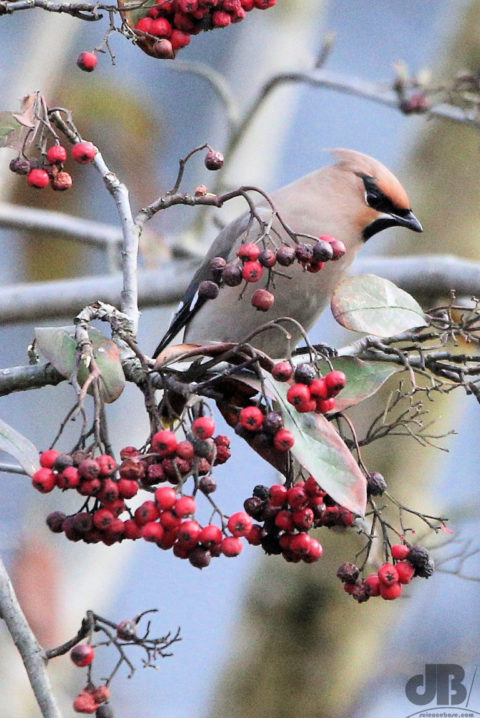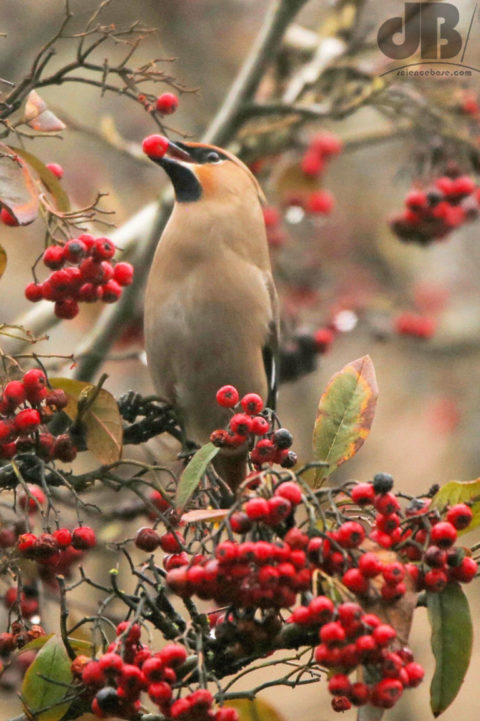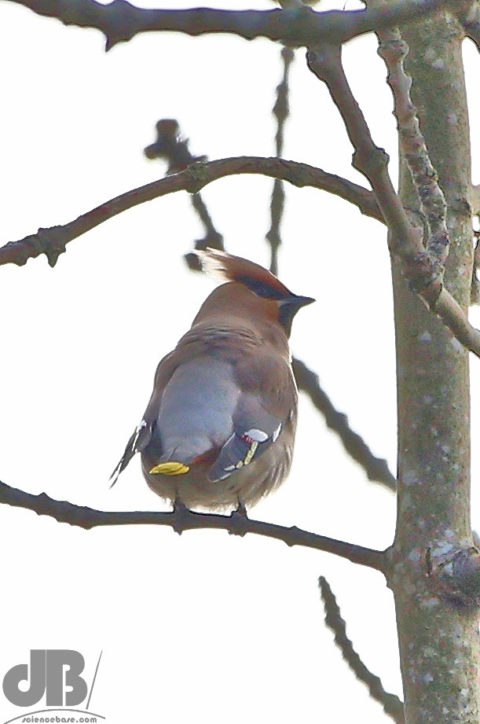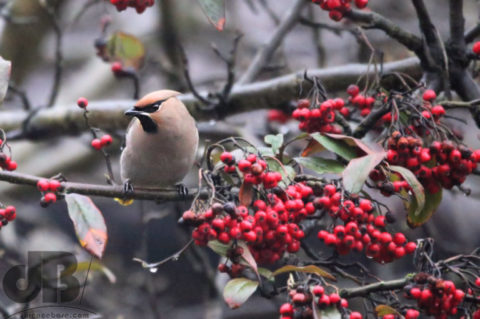The Waxwing (Bombycilla garrulus) a crested and plump, winter visitor from Scandinavia, smaller than a Starling, with a distinctive yellow tip to the tail and red sealing wax colouration to the ends of its wing tips, hence the name. They will leave colder climes and head south when food is in short supply, in fact its a lack of a decent berry crop in their home territories that drives them south. It seems that they most commonly end up being spotted in flocks in supermarket carparks that happen to be lined with berry-bearing trees. Presumably, they follow the motorways, perhaps harnessing ancient instincts that would have had them following valleys and rivers to find decent berry bushes.
In 2017, I saw a flock of 20 or so at the Cambridge Science Park near the Guided Busway but I was too slow to get a photo before they’d been spooked by dogwalkers and darted off down Milton Road and out of sight.

Winter 2017-2018, I’ve kept track of sightings via the WaxwingsUK twitter feed and attempted to catch up with the birds in a couple of places that Mrs Sciencebase and I happened to be visiting, North Norfolk and elsewhere, although we failed to see them.
A trip to the town of my alma mater (Newcastle) to visit our daughter who was also studying there at the time, brought us our first decent sighting. The WaxwingsUK feed mentioned that a bus stop opposite St Bartholomew’s Church in Long Benton, on the outskirts of the city had been hosting a small flock.

By the time we arrived, I’d got wind of just two still being around but we saw only one on three successive days passing the spot. Passersby almost all seemed to know what I was attempting to photograph and almost all of them had a tale of flocks of twitchers and birders and toggers in previous days! One or two people knew there was a bird of interest but didn’t know specifically what it was.

I don’t think there was a particularly large irruption of this species into the UK that winter, although sporadic sightings of small flocks were noted around Scotland, in Newcastle (Benton), Lincolnshire, North Norfolk, Suffolk, Southend in Essex, Kent, and elsewhere. There are usually lots of notes of them in Scotland. Indeed, it’s worth seeing what level of activity is reported from Shetland as this is the first place that might get an irruption if there has been the opposite of a mast year further north in terms of berries.
